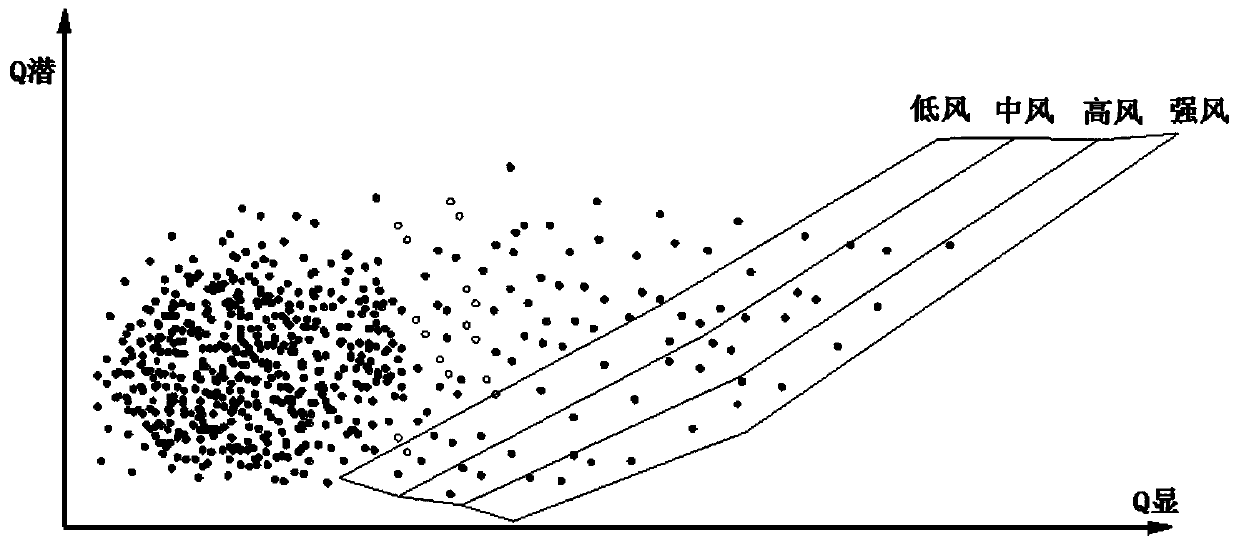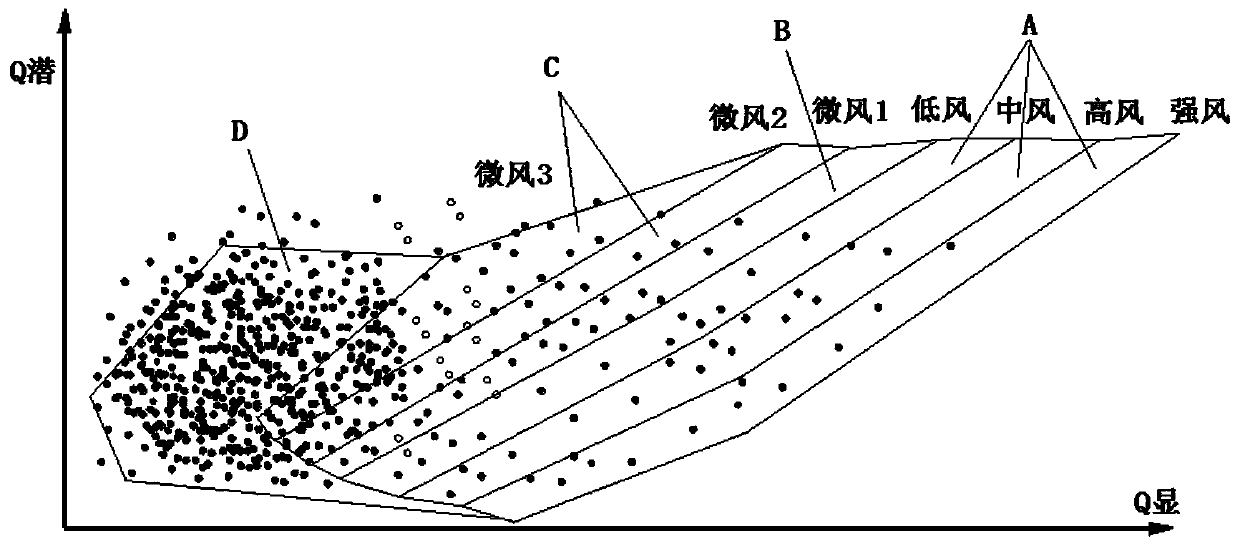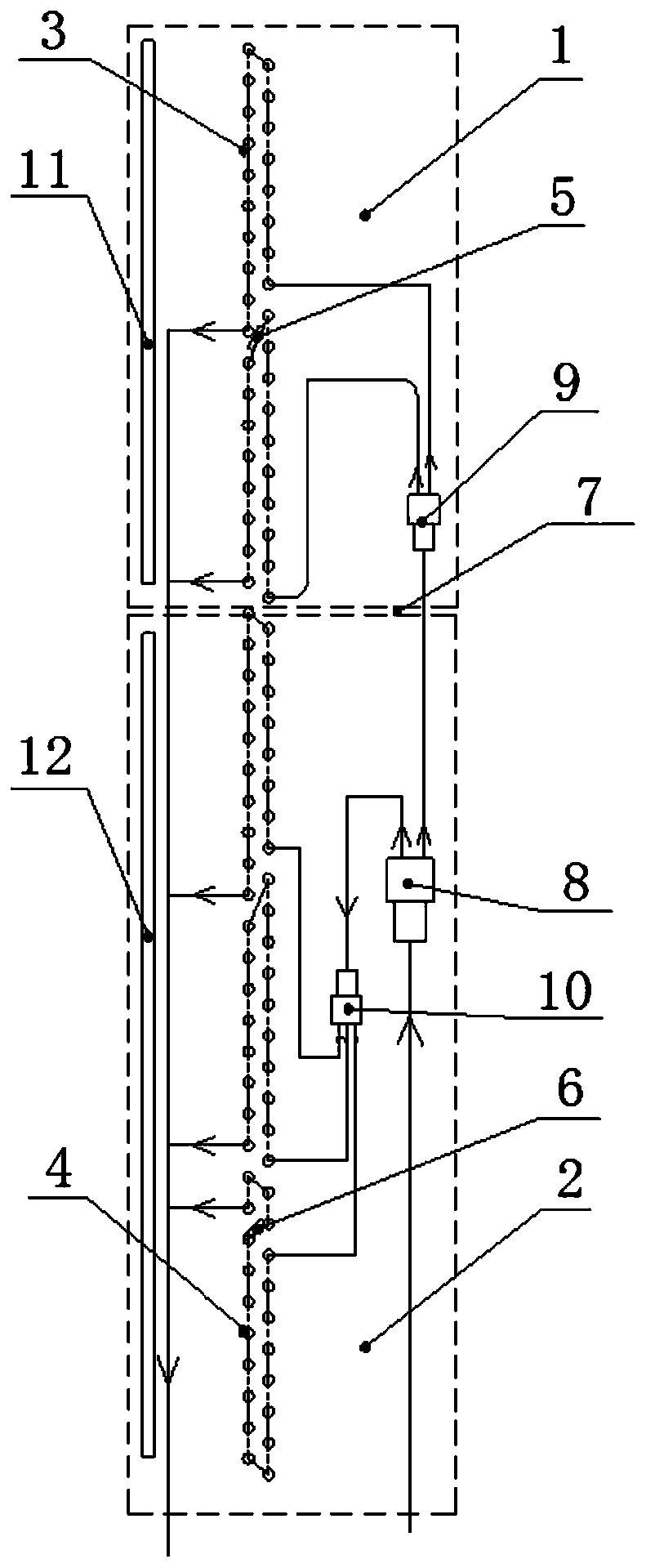Dual-air-duct air conditioner and dehumidification method and system thereof
A dual-air duct, air-conditioning technology, applied in air-conditioning systems, heating and ventilation control systems, heating and ventilation safety systems, etc., can solve the problems of small air-conditioning cooling and dehumidification requirements, reduced energy efficiency, and 0 latent heat capacity of air-conditioning
- Summary
- Abstract
- Description
- Claims
- Application Information
AI Technical Summary
Problems solved by technology
Method used
Image
Examples
example 1
[0080] When air-conditioning refrigeration automatic wind speed or dehumidification is running, the parameters are set as: ΔR=5rpm, Δr=10rpm, T1=10℃, T2=5℃, E1=0.5℃, E2=3℃, the lowest speed for reliable operation of the lower fan 100rpm, the minimum speed of the upper fan for reliable operation is 50rpm, φ1=80%, φ2=20%, Te_down2=5℃, Te_down1=0℃, t1=10min, t2=5min, Tout1=30℃, N2=50, Fmax=80Hz. The indoor ambient temperature Tin is 30°C, the indoor relative humidity φ is 92%, and the outdoor ambient temperature is 35°C. The target temperature Ts is 25℃, and the target relative humidity φs is 50% (if the relative humidity cannot be set, the default is 65%), at this time the target temperature difference E=Tin-Ts=30℃-25℃=5℃>3℃( E2), φ=92%>80%(φ1), Tout=35℃>30℃(Tout1) meets the definition of medium and high sensible heat load zone, then enters the dehumidification mode of medium and high sensible heat load zone. Indoor unit: Control the upper fan and the lower fan to synchronize t...
example 2
[0084] When the air-conditioning refrigeration automatic wind speed or dehumidification operation, the room temperature Tin is: 25.5℃, relative humidity φ is 85%, set temperature Ts is 25℃, set relative humidity φs is 55% (if the relative humidity cannot be set, then Default 65%) Te_down1=0℃, Te_down2=5℃, N1=25, E3=-2℃, other parameter settings are the same as example 1. At this time, the target temperature difference E=Tin-Ts=25.5℃-25℃=0.5℃≤0.5℃(E1), φ-φs=85%-60%>10%(φ2), which accords with the ultra-low sensible heat and high latent heat load zone Definition, then enter the ultra-low sensible heat and high latent heat load zone dehumidification mode. Indoor unit: Control the upper fan to run at a low wind position; control the lower fan to run at the lowest speed of 100rpm that can operate reliably. Detect after 10 minutes, if the detected indoor ambient temperature Tin=25℃, the relative indoor humidity φ=80%, then the target temperature difference E=Tin-Ts=25℃-25℃=0℃20%(φ2)...
PUM
 Login to View More
Login to View More Abstract
Description
Claims
Application Information
 Login to View More
Login to View More - R&D
- Intellectual Property
- Life Sciences
- Materials
- Tech Scout
- Unparalleled Data Quality
- Higher Quality Content
- 60% Fewer Hallucinations
Browse by: Latest US Patents, China's latest patents, Technical Efficacy Thesaurus, Application Domain, Technology Topic, Popular Technical Reports.
© 2025 PatSnap. All rights reserved.Legal|Privacy policy|Modern Slavery Act Transparency Statement|Sitemap|About US| Contact US: help@patsnap.com



